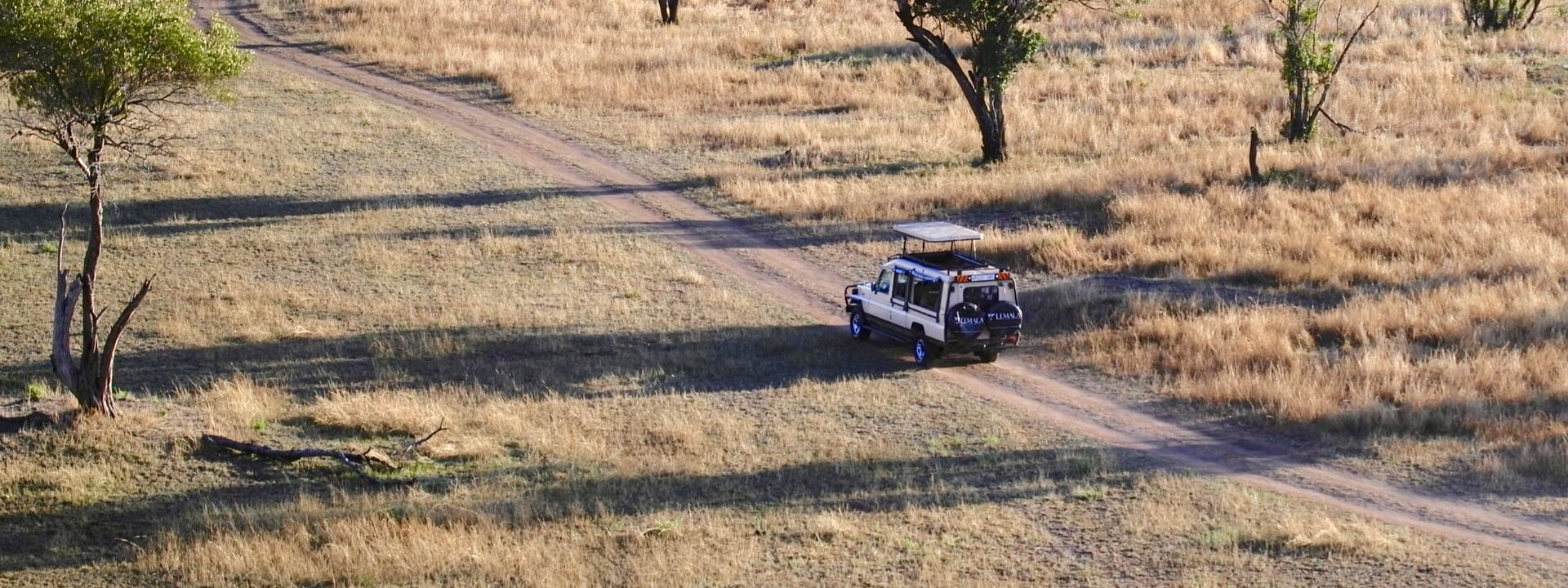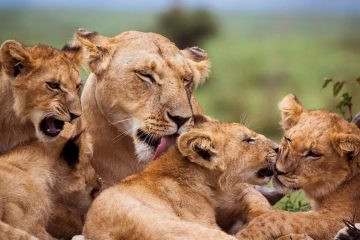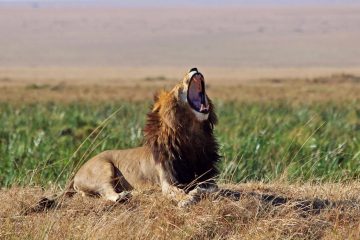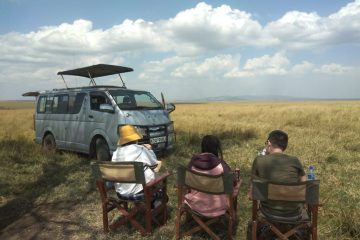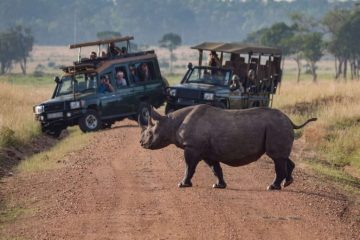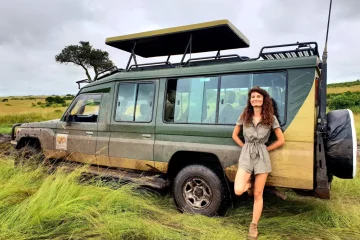How to get to Tanzania after a Kenyan safari
After completing a Kenyan safari, there are several options to travel to Tanzania, which shares a border with Kenya to the south. Here are the common methods of getting to Tanzania from Kenya:
- Road Transport: One of the most popular ways to get to Tanzania from Kenya is by road. There are several border crossings between the two countries, and the most commonly used ones are the Namanga Border Crossing and the Isebania Border Crossing. If you are in Nairobi, you can take a road trip to the border and then continue to your destination in Tanzania.
- Domestic Flights: If you prefer a faster and more convenient option, you can take a domestic flight from Nairobi or other major cities in Kenya to various destinations in Tanzania. There are regular flights connecting Nairobi to popular Tanzanian cities like Dar es Salaam, Arusha, and Zanzibar.
- International Flights: For long-distance travelers or those coming from regions outside Kenya, international flights to Tanzania are available. Major international airports in Tanzania include Julius Nyerere International Airport in Dar es Salaam, Kilimanjaro International Airport near Arusha, and Abeid Amani Karume International Airport in Zanzibar.
- Bus Services: There are also bus services that operate between Kenya and Tanzania, offering an affordable option for travelers. Buses run between Nairobi and various Tanzanian cities, including Arusha, Dar es Salaam, and Moshi.
- Private Transfers: For a more personalized and private experience, you can arrange for private transfers or shuttle services between Kenya and Tanzania. These services provide door-to-door transportation and can be arranged to suit your preferred schedule.
- Cross-Border Tours: Some tour operators offer cross-border tours that combine both Kenyan and Tanzanian safari experiences. These tours often include transportation between the two countries and take care of border crossings and logistics.
When traveling from Kenya to Tanzania, it’s essential to check visa requirements and other entry regulations for your nationality. Ensure that you have the necessary travel documents and plan your itinerary accordingly. Tanzania is a fantastic destination to continue your safari adventure, with its diverse wildlife, stunning landscapes, and rich cultural heritage.
Wildebeest Migration between Kenya and Tanzania
The Great Wildebeest Migration is one of the most spectacular wildlife events on the African continent, and it takes place annually between Kenya and Tanzania. It involves the movement of millions of wildebeests, accompanied by zebras and other herbivores, in search of fresh grazing and water.
The migration is a continuous, year-round cycle, driven by seasonal changes in rainfall and vegetation. The exact timing and routes of the migration can vary from year to year, as it is influenced by weather patterns and the availability of resources.
The migration begins in the southern Serengeti of Tanzania around December, where the wildebeests give birth to their young during the calving season. The vast herds gather in the southern plains to feed on the nutrient-rich grasses, which provide essential nutrients for the pregnant wildebeests and nursing calves.
As the dry season approaches in the Serengeti around May, the wildebeest herds start their northward migration towards the Maasai Mara in Kenya. This journey is fraught with dangers, including predators such as lions, cheetahs, and crocodiles as they cross treacherous rivers, most notably the Mara River. The river crossings are some of the most dramatic moments of the migration, with wildebeests braving crocodile-infested waters to reach the greener pastures of the Maasai Mara.
The migration continues in the Maasai Mara until October when the herds begin their return journey to the Serengeti in Tanzania as the short rains start to fall. The cycle then repeats itself as the wildebeests return to the southern Serengeti for the next calving season.
The Great Wildebeest Migration is a natural wonder and a testament to the resilience and adaptability of wildlife. It is a thrilling sight to witness the massive herds thundering across the plains, an awe-inspiring spectacle that draws travelers from all around the world to experience the raw beauty of the African wilderness.
Both Kenya’s Maasai Mara and Tanzania’s Serengeti offer excellent opportunities to witness different phases of the migration, providing an unforgettable safari experience and a chance to witness one of nature’s greatest shows on earth.
Kenya Safari vs. Tanzania Safari:
Both Kenya and Tanzania offer incredible safari experiences, each with its unique highlights and attractions. Here are some key differences and highlights to consider when choosing between a Kenya safari and a Tanzania safari:
Both Kenya and Tanzania safaris offer unique and extraordinary wildlife experiences, but they also share some similarities due to their proximity and geographical features. Here’s what makes each safari unique and the similarities they share:
Unique Aspects of Kenya Safari:
- Maasai Mara Great Migration: The Maasai Mara National Reserve is renowned for hosting the Great Migration, where millions of wildebeest and zebras cross the Mara River in search of greener pastures. This is a breathtaking spectacle and one of nature’s most remarkable events.
- Amboseli’s Majestic Backdrop: Amboseli National Park provides a stunning view of Mount Kilimanjaro, Africa’s highest peak. Witnessing herds of elephants with the iconic mountain in the background is a unique and picturesque experience.
- Samburu’s Rare Wildlife: Samburu National Reserve is home to unique species not found in other regions, such as the Grevy’s zebra, reticulated giraffe, and Somali ostrich. This makes it an excellent destination for spotting rare and unusual wildlife.
- Birdwatching at Lake Nakuru: Lake Nakuru National Park is a paradise for birdwatchers, with its vast flocks of flamingos creating a sea of pink along the lake’s shores. The park also hosts a rhino sanctuary, offering opportunities to see both black and white rhinos.
- Laikipia’s Exclusive Conservancies: Laikipia Plateau offers a different safari experience with its private conservancies, providing more exclusive and intimate encounters with wildlife. Walking safaris and interactions with local communities enhance the experience.
Unique Aspects of Tanzania Safari:
- Serengeti’s Vast Savannas: The Serengeti National Park is renowned for its vast savannahs and is the stage for the Great Migration’s dramatic crossings. The sheer size and wilderness of the Serengeti create an awe-inspiring safari adventure.
- Ngorongoro Crater’s Natural Wonder: The Ngorongoro Crater, a UNESCO World Heritage Site, is a breathtaking caldera hosting a high concentration of wildlife, including the Big Five, within its enclosed walls.
- Tarangire’s Elephant Herds: Tarangire National Park is known for its massive elephant herds and unique baobab trees, offering a distinctive landscape and fantastic elephant sightings.
- Selous’ Riverside Safaris: Selous Game Reserve provides a different safari experience with boat safaris along the Rufiji River, allowing visitors to witness crocodiles, hippos, and an array of birdlife from a unique perspective.
- Zanzibar’s Island Retreat: After a safari, visitors can unwind on the stunning beaches of Zanzibar, explore the island’s history and culture, and indulge in its rich spices.
Shared Similarities of Both Safaris:
- Abundant Wildlife: Both Kenya and Tanzania boast an incredible diversity of wildlife, including the iconic Big Five (lion, elephant, buffalo, leopard, and rhinoceros) as well as cheetahs, giraffes, zebras, and numerous bird species.
- Rich Cultural Experiences: Both countries offer opportunities to engage with local cultures, particularly through visits to Maasai villages and other tribal communities, learning about their traditions and lifestyles.
- Thrilling Game Drives: Both safaris provide thrilling game drives in open 4×4 vehicles, led by experienced guides who have extensive knowledge of the wildlife and ecosystems.
- Stunning Landscapes: Both countries boast stunning landscapes, from the vast savannahs of the Serengeti to the picturesque backdrop of Mount Kilimanjaro in Amboseli and the dramatic scenery of the Ngorongoro Crater.
Both Kenya and Tanzania safaris offer unique and unforgettable experiences, with each destination showcasing its distinct attractions and wildlife spectacles. Whether you choose to explore Kenya’s Maasai Mara or Tanzania’s Serengeti, both safaris promise a remarkable journey through Africa’s diverse and captivating wilderness.
Factors to consider when choosing between a Kenya and Tanzania safari include the specific wildlife you want to see, the timing of your visit to witness the Great Migration, the variety of landscapes you wish to explore, and the overall experience you desire, whether it’s a cultural immersion, hot air balloon safaris, or thrilling wildlife encounters.
Both countries offer exceptional safari experiences, and you can also opt for a combined safari that includes both Kenya and Tanzania, allowing you to explore the best of East Africa’s wildlife and natural wonders.
Which Country offers better safaris?
Imagine endless herds of wildebeests flowing into Kenya’s Masai Mara from Tanzania’s Serengeti. Observe the majestic elephant families walking through the plain in Amboseli Park under the shadow of the imposing Mt. Kilimanjaro. Discover the magnificent lion prides in Kenya’s Mara region, which are only rivaled in density by Tanzania’s Ngorongoro Crater.
Determining which safari is “better” between Kenya and Tanzania is subjective and depends on individual preferences and priorities. Both countries offer exceptional wildlife experiences and have their unique attractions. Here are some factors to consider when choosing a safari destination:
- Wildlife Viewing: Both Kenya and Tanzania are home to abundant wildlife, including the Big Five and a wide variety of other species. However, the timing of your visit may influence the type of wildlife sightings you can expect. For example, if witnessing the Great Migration is a priority, then Kenya’s Maasai Mara during certain months or Tanzania’s Serengeti during others would be the better choice.
- Landscape and Scenery: Each country offers diverse landscapes. Kenya’s Maasai Mara is characterized by sweeping grasslands, while Tanzania’s Serengeti features vast savannahs. Both countries have beautiful national parks with stunning backdrops, such as Mount Kilimanjaro in Tanzania’s Amboseli or the Ngorongoro Crater’s unique caldera.
- Accessibility: Kenya has a well-developed tourism infrastructure, making it easier to access various national parks and reserves. Tanzania, on the other hand, has some remote areas that require more logistical planning and travel time.
- Cultural Experiences: Both countries have rich cultural heritage and opportunities to interact with local communities, but the specific tribes and cultural experiences may differ. Kenya’s Maasai communities and Tanzania’s Maasai and other ethnic groups each offer unique insights into their traditions and ways of life.
- Safari Costs: The cost of safaris can vary depending on the park fees, accommodation, and travel logistics. Tanzania is often perceived as slightly more expensive than Kenya, but this can vary based on the safari package and level of luxury.
- Additional Activities: If you are interested in combining your safari with other activities, Kenya offers beach destinations like Diani and Watamu, while Tanzania has the beautiful island of Zanzibar and other exotic beach locations.
Ultimately, the “better” safari destination depends on your interests, budget, and the specific wildlife experiences you hope to have. Both Kenya and Tanzania are fantastic choices for an unforgettable safari adventure, and you are likely to have an incredible time regardless of your decision. Consider consulting with a reputable safari operator to tailor your safari itinerary to suit your preferences and requirements.

